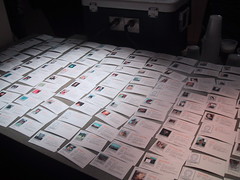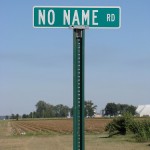
Image by rick via Flickr
I’m not Lisa, my name is Jodi. One of my spammers doesn’t seem to know that though. He just left a comment saying, “Lisa, this is a nice video.”
This is not a post about complaining though. It’s not even a post about spammers or how to fight trolls.
It is a post about using personalization the right way.
Get personal
You see, the spammer is using a technique that would work really well if done properly. Talking to people by name is a good way to get attention. Everyone likes to see their name (even if you don’t particularly like your name; my parents got mine out of the newspaper; if only they’d seen the name Katharine or Elizabeth instead… sigh.. but I digress). The idea is that people react to the sound of their own name. I once worked in an office with another Jodi, and every time I heard “my” name, I’d turn around, even if it was her boss calling and not mine.
Use it Wisely
Inserting someone’s name in an email or a letter can work wonders. I once got a mailing that had my name inserted in several places – including photos of t-shirts and other merchandise with my name on them. Pretty clever.
Just don’t overdo it. Using names in email subject lines used to work really well, I think now the effect has lessened, since only marketers do that.
UPDATE: Paul Cunningham just pointed out this statistic from a recent Mailer Mailer email marketing report:
Personalization in subject lines dramatically reduces both open rates and click through rates — with open rates of 6.7% (compared to 11.2% overall) and click through rate of 1.2% (compared to 1.6%). -MailerMailer “Email Marketing Metrics Report” (July 2010)
Next time you do a promotion, try a little name-dropping. See what happens.

 It’s easy to get distracted by the latest bright and shiny technology. We gawp at Buzzfeed, get entranced by SnapChat, and twitter away hours on social media. But sometimes, the best way to advertise isn’t the latest idea, but one of the oldest. Personalization has been used in direct marketing since the last century, but it still works (both online and off).
It’s easy to get distracted by the latest bright and shiny technology. We gawp at Buzzfeed, get entranced by SnapChat, and twitter away hours on social media. But sometimes, the best way to advertise isn’t the latest idea, but one of the oldest. Personalization has been used in direct marketing since the last century, but it still works (both online and off).